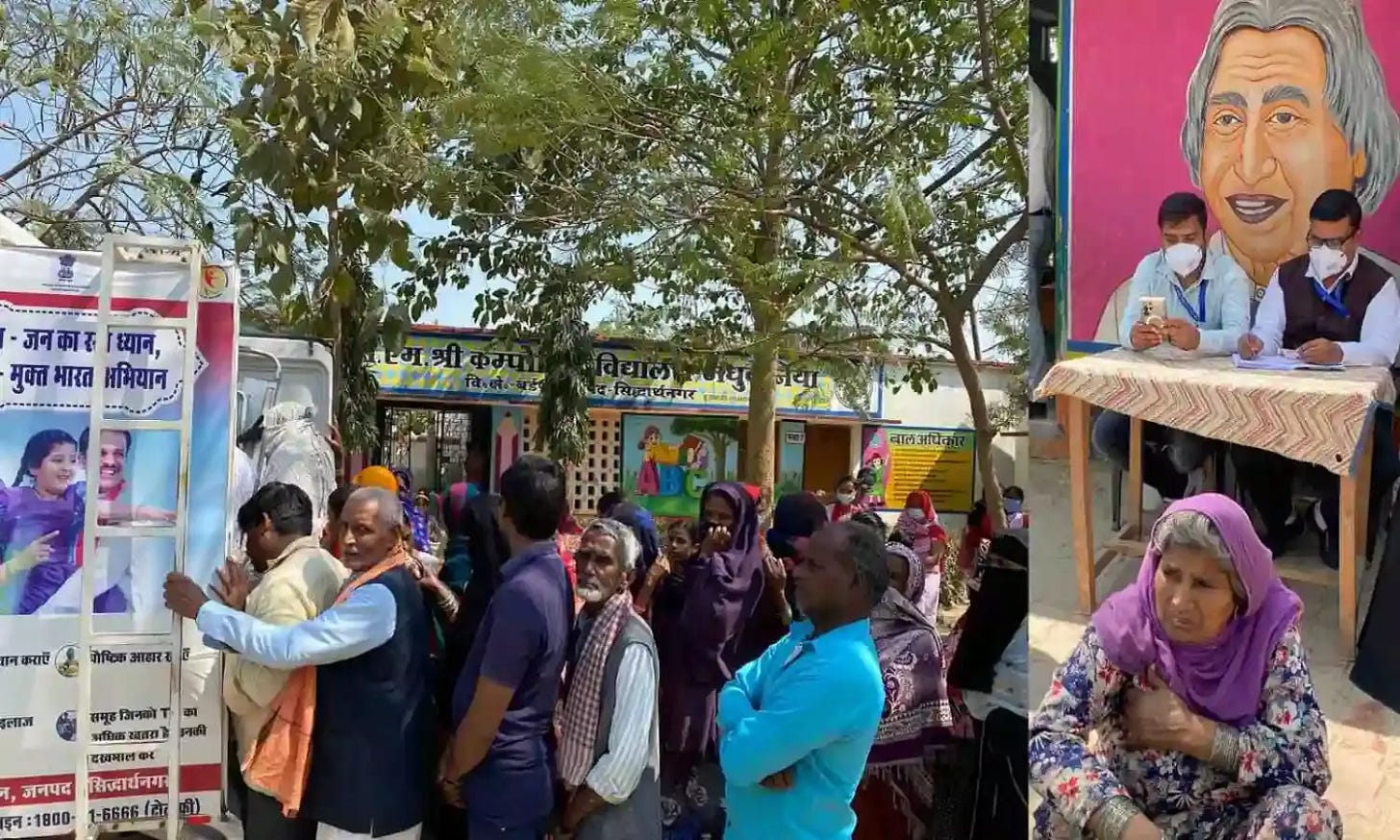Dim The Lights
This week, the muted crisis of light pollution, delayed rehabilitation for bonded labour, frontline workers' struggle in TB surveillance, and more
From the health risks of light pollution to the unfulfilled promises of bonded labour rehabilitation, India’s grassroots battles reveal systemic gaps and resilient communities. In urban areas, artificial light disrupts sleep and fuels metabolic disorders, while in Chhattisgarh, rescued bonded labourers await delayed aid, trapped by bureaucratic hurdles. In rural Uttar Pradesh and Meghalaya, women ASHA workers confront TB stigma to drive screenings, often without transparency, raising ethical concerns. Meanwhile, in Odisha’s Koraput, tribal women lead the charge against wildfires, blending traditional knowledge with climate resilience. These stories highlight the human cost of neglect and the power of community action in tackling India’s pressing challenges.
The Hidden Health Risks of Light Pollution
A 38-year-old woman’s struggle with fatigue, weight gain, and irregular menstrual cycles, as seen by Dr. Narendra Kotwal at Paras Health, Panchkula, reveals an emerging health crisis: light pollution. Her night shift work and exposure to a nearby digital billboard disrupted her circadian rhythm, contributing to pre-diabetes, hypothyroidism, and elevated cortisol levels.
A 2023 study notes 136 million Indians are pre-diabetic, with light pollution increasingly linked to metabolic disorders. Chronic exposure to artificial light at night suppresses melatonin, raising risks of cancer, Alzheimer’s, and mood disorders, per global studies. In India, 80% live under light-polluted skies -- yet awareness remains low, with 57% of surveyed Indians unaware of the issue. Experts urge better lighting regulations, blackout curtains, and blue-light filters to mitigate this growing threat, as urban sprawl fuels excessive night-time brightness. Charu Bahri reports.
The Unfulfilled Promise of Bonded Labour Rehabilitation
In 2022, Manoj Kumar Anant and his wife Shakuntala Bai, along with nine others from Chhattisgarh’s Satnami community, were rescued from bonded labour at a brick kiln in Kushinagar, Uttar Pradesh.
Three years later, Manoj, now bedridden with a paralysed arm after an accident, awaits full rehabilitation under the Union government’s 2021 Central Sector Scheme for Bonded Labour. The group received Rs 30,000 each as immediate cash assistance only in July 2024, but none have received the promised Rs 1-3 lakh or non-financial aid like housing or employment.
Delays stem from linking rehabilitation to employer convictions, a process mired in slow trials and poor coordination. India, with 11 million in modern slavery, risks missing its 2030 target to rescue 18.4 million bonded labourers by 98%. Experts urge delinking rehabilitation from convictions and improving state-level enforcement to prevent rebondage. Shreehari Paliath reports.
The Silent Battle Against TB in Rural India
In India’s rural and tribal regions, tuberculosis (TB) remains a hidden scourge, shrouded in stigma. In Siddharth Nagar, Uttar Pradesh, and Meghalaya’s Ri Bhoi, health camps disguise TB screenings as general check-ups to overcome community fear, raising ethical questions about transparency.
Men, particularly the elderly, are most affected, yet women—ASHA workers, nurses, and caregivers—shoulder the burden of ensuring treatment. In Siddharth Nagar’s Madhubeniya, villagers attended a TB camp unaware of its purpose, reflecting deep-seated denial. Meghalaya’s tribal areas face similar resistance, with local healers aiding outreach.
India, with 2.6 million new TB cases in 2024, leads globally, but campaigns have cut cases by 18% from 2015-2023. ASHA workers like Keradalin Kharmujai face hostility, yet they persist. The fight, bolstered by initiatives like Nikshay Mitra, battles not just TB but societal silence, with women at its forefront. For IndiaSpend Hindi, Alka Barbele reports.
Women Lead the Fight Against Wildfires in Koraput
In Odisha’s Koraput district, tribal communities in over 100 villages are combating a rising threat: wildfires fueled by climate change. Women like Padmavati Halma from Biriphulguma village are at the forefront, acting as first responders to extinguish fires, prevent flare-ups, and educate neighbors.
Wildfires destroy biodiversity, disrupt agriculture, and threaten non-timber forest produce like medicinal plants and tendu leaves, critical to the local economy. Climate shifts have worsened the crisis, with erratic rainfall and early heatwaves, as noted by farmer Bighnraj Disari. Globally, wildfire carbon emissions rose 60% from 2001-2023, exacerbating climate change.
Supported by groups like SPREAD, villagers blend traditional ecological knowledge with community vigilance to manage fires. With limited resources, their resilience underscores a vital lesson: climate adaptation begins at the grassroots, led by women safeguarding their forests and livelihoods. A Jigyasa Mishra report for IndiaSpend Hindi.
And that is it for this week; have a good weekend.





